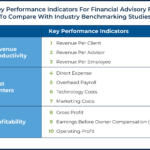Enjoy the current installment of “Weekend Reading For Financial Planners” – this week’s edition kicks off with the news that the Securing a Strong Retirement Act (a.k.a. SECURE 2.0) has passed the House of Representatives with strong bipartisan support, meaning that after a long wait since the bill’s introduction, more tax and retirement planning opportunities may be on their way before the end of the year. Though with the legislation still pending review and passage in the Senate, it may take until the end of the year before it is actually signed into law?
Also in industry news this week:
- A judge has ruled against the state of Massachusetts in its enforcement action against the brokerage firm Robinhood, and in doing so invalidated parts of the state’s fiduciary rule for broker-dealers (underlining the need for regulators to more clearly distinguish the line between sales and advice and to uniformly regulate firms on both sides of the divide)
- RIA Mergers & Acquisitions activity continued at a strong pace in 2021, with the median firm valuation reaching 9x EBITDA – though the growing number of sellers may result in slowing valuation growth in the coming years (even while the total number of deals continues to increase)
From there, we have several articles on the regulation of RIAs and broker-dealers:
- The SEC has published its 2022 list of examination priorities for broker-dealers and RIAs, including ESG factors (and concerns about “greenwashing”), crypto, private funds, and managing conflicted compensation models in compliance with Regulation Best Interest
- In a new Staff Bulletin, the SEC has reiterated some of the standards of conduct that apply to both broker-dealers and RIAs when making account recommendations, namely the requirement to consider costs to the client (and justify and document the reason for recommending wrap accounts when lower-cost alternatives are available)
- As private markets grow in size and influence, the SEC has proposed new rules increasing its oversight and enforcement over private equity and hedge funds and imposing new rules and reporting requirements on private fund managers
We also have a number of articles on retirement:
- How clients with health insurance coverage through Medicare might get a mid-year reprieve on their Part B premiums due to price changes in one very-high-cost Alzheimer’s drug
- Why some retirees choose to live on cruise ships, and the planning considerations for doing so
- Six strategies advisors can use to reduce retirement income risk for clients, including asset-liability matching, dynamic spending, buckets, and more
We wrap up with three final articles, all about career planning:
- A survey shows that while current and aspiring advisors agree on the importance of client communication in addition to technical skills, the biggest blocking point for many new advisors is simply the financial burden of jobs that require them to get their own clients from scratch (with little income until they manage to do so)
- Why exploring a range of jobs and experiences early on (rather than becoming a specialist right away) can lead to a more fulfilling career
- Why time and creating financial flexibility for oneself are two of the most important drivers of success when taking a career risk
Enjoy the ‘light’ reading!









